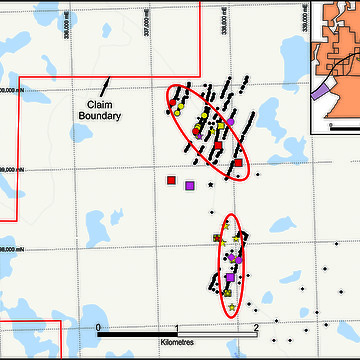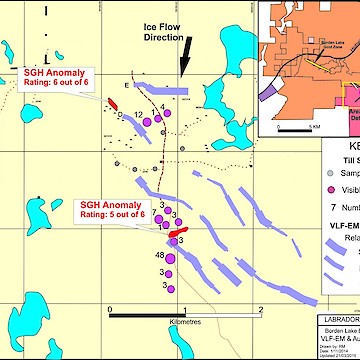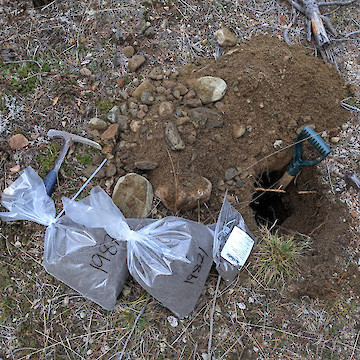Borden Lake Extension
Property
Borden Lake Extension (“BLE”) consists of 219 claims 100% owned by Labrador Gold subject to a 2% net smelter return royalty. The project is located in an area of excellent infrastructure just 16km east of the town of Chapleau, Ontario. Road access is via the paved Chapleau Timmins highway 101 and a well maintained gravel logging road south from the highway.
The property lies immediately southeast of Newmont GoldCorp’s Borden Gold mine.
Geology
The property is located in the Archean –aged Superior Province of the Canadian Shield and covers variably metamorphosed rocks of the Kapuskasing Structural Zone (KSZ). Rocks include mafic gneiss and paragneiss, tonalite gneiss and metaconglomerate as well as intrusions of tonalite, anorthosite and diorite
The property is underlain predominantly by metasedimentary gneiss, with minor mafic gneiss and tonalitic gneiss. The Borden Lake Belt occurs to the northwest and runs for approximately 35km east-west. It is primarily comprised of metasedimentary rocks, including a metaconglomerate, and metavolcanic rocks. Drilling at BLE encountered mainly biotite gneiss, garnet biotite gneiss as well as pegmatite. Mafic metavolcanic rocks were also encountered and these may be part of the Borden Lake Belt.
Mineralization
Gold exploration is focused on the discovery of mesothermal gold associated with shear zone hosted quartz veins similar to that found at the adjacent Borden Mine.
Exploration of the property suffers from a lack of outcrop and so till sampling and geophysics has been used to target potential areas for drill testing. Till samples collected across the trend of VLF-EM anomalies were submitted for concentration and identification of gold grains. Results indicate that of the 19 samples submitted, 15 contained gold grains with 48 grains found in one of the samples. Samples with the highest numbers of gold grains occur down ice (south southwest) of the projection of the trend of the Borden Lake gold zone. The occurrence of the gold grains in the till samples remains the only indication of gold in close proximity to the Borden Lake gold zone since its discovery in 2010.
Maps & Photos






